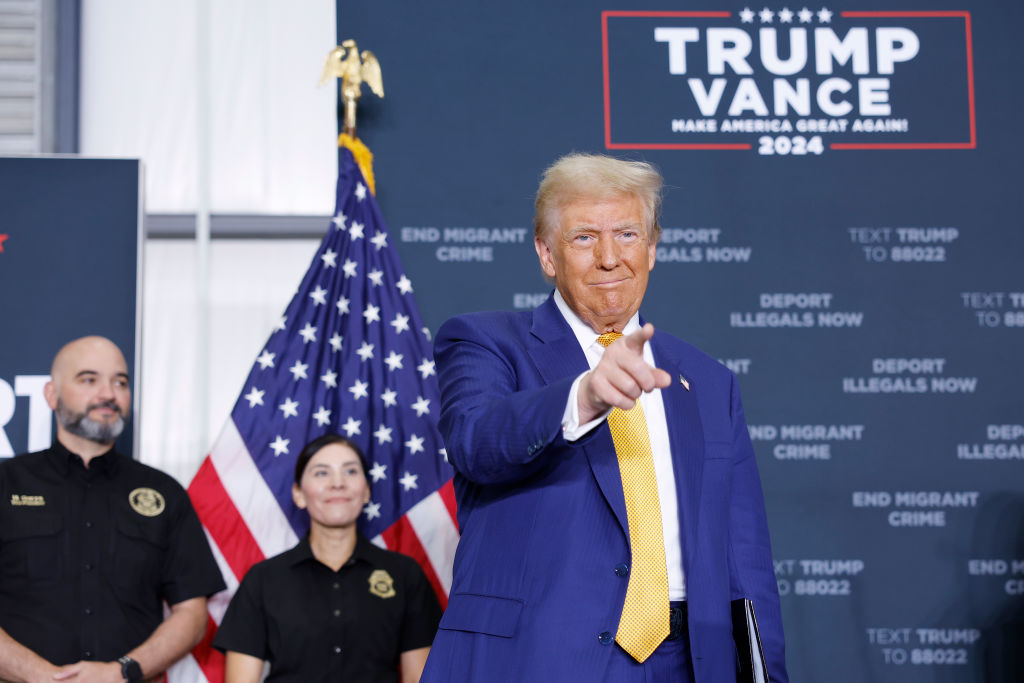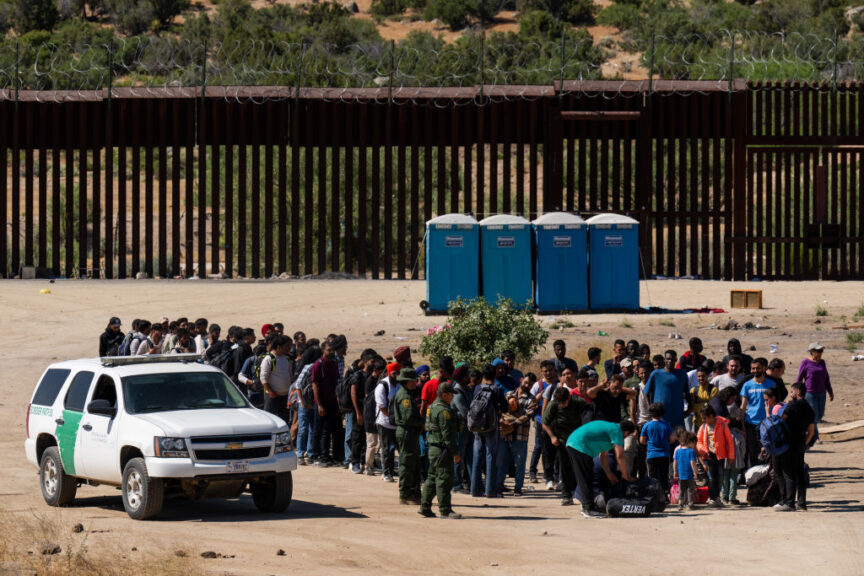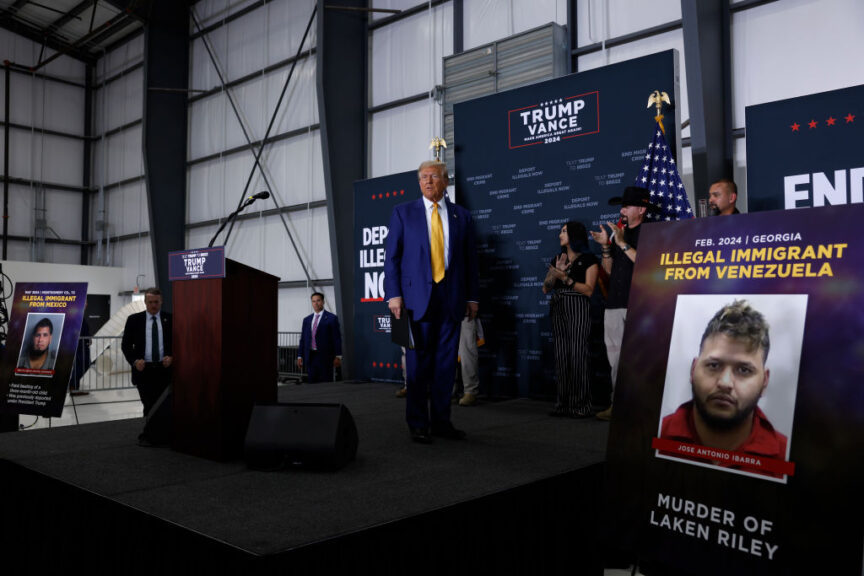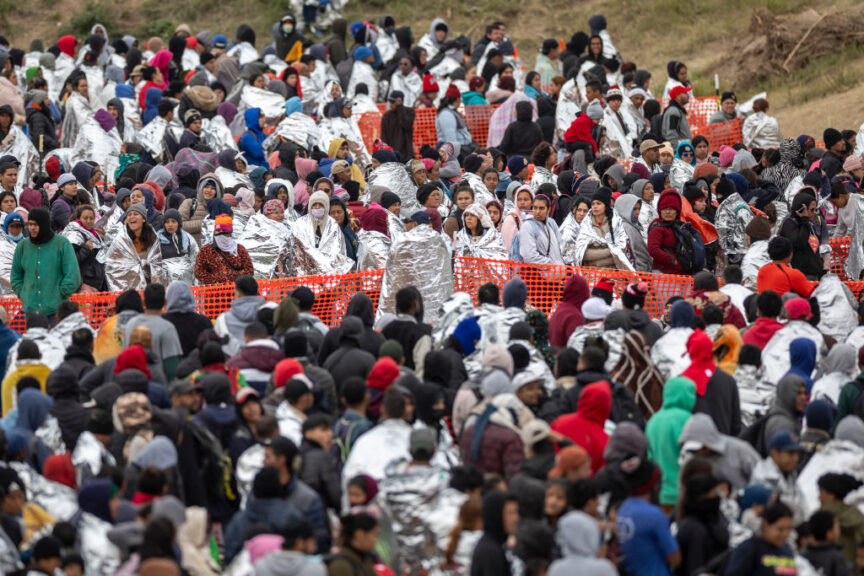The ‘Trump Effect’ 2.0: Illegal Border Crossings Set To Plummet, On One Condition
Shortly after Donald Trump’s upset election victory in 2016, official State of Texas business brought me to two ICE immigration detention centers in South Texas. I ran an intelligence group for the Texas Department of Public Safety’s Intelligence and Counterterrorism Division. What I learned there has informed my beliefs about illegal immigration ever since. Back ...

Shortly after Donald Trump’s upset election victory in 2016, official State of Texas business brought me to two ICE immigration detention centers in South Texas. I ran an intelligence group for the Texas Department of Public Safety’s Intelligence and Counterterrorism Division. What I learned there has informed my beliefs about illegal immigration ever since.
Back then, part of my routine was to help the feds interview apprehended aliens from Pakistan, Syria, Somalia, and Afghanistan and collect intelligence about potential Islamic terrorism. The South Texas Processing Center in Pearsall, Texas, some one hundred miles from the Mexican border, was always filled to the brink with detainees.
But to my surprise, for the first time, it was as empty as a football stadium in baseball season. The same was true of ICE’s larger, ever-packed-to-capacity Port Isabel Service Processing Center near Brownsville, Texas.
“Where is everyone?” I asked the ICE intelligence officers, separately, at both facilities.
The same surprising answer went something like this: People throughout Latin America heard Trump on the campaign stump vowing illegal immigration crackdowns, and they decided to stay home rather than risk smuggling money for nothing. If the perceived odds of successfully getting in and staying a long time to earn money is high enough, they’ll come. If the perceived odds are higher that they’ll be blocked and deported, they’re sheltering in place.
It was the first time I’d heard such a thing, although it seemed so obvious.
The number of Border Patrol apprehensions, however, proved it. In November of 2016 there were 63,361 border apprehensions but by March of 2017 that number dropped to 12,193, the lowest count in decades.

Qian Weizhong/VCG via Getty Images
After interviewing migrants south of the border, some in the U.S. media also noticed. They began to call the link between the candidate’s rhetoric and deterring impact on migration plans “The Trump Effect.”
Well, act two of The Trump Effect is now in play.
While it’s too early for data to prove it, my recent pre-election interviews with immigrants in deep southern Mexico struck a very familiar chord.
“If after election day [Kamala Harris] is elected, we know that everything is good, then we can enter,” one Ghanaian man told me in Tapachula, Mexico’s downtown plaza. Otherwise, he stated, he would stay put in Mexico for years if necessary. That sentiment was ubiquitous in mid-October.
“We know that if Donald Trump wins, all the migrants will be kicked out of the United States,” a middle-aged Venezuelan man in the plaza said. “We hope that he doesn’t win.”
But border hawks should not get complacent. The Trump Effect’s sustainability over time is hardly guaranteed.
The first Trump Effect showed that real action must follow campaign rhetoric. It didn’t last, as Liberal groups challenged every one of Trump’s policies and bogged them down in court.
“No president has been sued over his immigration policies as much as Donald Trump,” one November 2019 Forbes article pointed out.
In 2021, a National Bureau of Economic Research study concluded that Trump’s rhetoric and policies led to a “large, abrupt decline in apprehensions beginning around January 2017.”
“We would argue this was one of the more important changes in the U.S. immigration space in recent years,” wrote researchers Mark Hoekstra and Sandra Orozco-Aleman of their discovery that political communications by politicians do influence immigrant decisions.

Anna Moneymaker/Getty Images
But they too noticed that The Trump Effect didn’t last long. By May 2017, apprehension rates began to increase and had returned to pre-election trends by the summer of 2018. It just got worse before it got better.
MATT WALSH’S ‘AM I RACIST?’ NOW STREAMING ON DAILYWIRE+
By late 2018, with litigation and political opposition of every stripe bogging down Trump’s best laid plans, hundreds of thousands of migrants were pouring in and would do so until mid-2019 when the administration came up with some policy innovations enabling major crackdowns –and court decisions that eventually went Trump’s way.
But today, the whole world will be watching for Trump to follow through with a promised mass deportation program, fast removals of every immigrant caught illegally crossing, and the dismantling of Biden-era open border policies.
And once again, aspiring migrants will rely on their many allies inside the United States to bog things down.
The New York Times recently reported that battalions of immigration lawyers are preparing to battle Trump in court again.
“We literally have a blueprint of what they are planning to do, and so we had months and months to figure out how to protect people,” Becca Heller, founder of the International Refugee Assistance Project, told the paper. “The Trump team might think they are ready, but so are we.”
Expect some large-scale test charges on Border Patrol between ports of entry and on the U.S.-Mexico bridges before and after Trump’s inauguration.
The hundreds of thousands of immigrants caught downstream by the U.S. election result will be glued to their cell phones and encrypted social media apps, paying close attention to what becomes of those up-trail — those who test the Trump administration’s will to stop and deport them. How Trump handles them will matter greatly.

Credit: Photo by John Moore/Getty Images.
For border hawks and anyone who wants to see an end to four years of unimpeded mass migration, however, there are silver linings in that 2025 is not 2017. For starters, many of the policies that Trump 2.0 will bring back are already court-battle tested, such as Remain in Mexico, which allows the Border Patrol to instantly return border-crossers back to Mexico to await the years of their asylum claim adjudications. So too have the courts upheld a Trump 1.0 policy allowing denial of asylum claims by people who passed through a perfectly safe third country and didn’t claim asylum there already. And more besides.
But mainly, Trump 2.0 is unlikely to have to weather high political heat for closing the border down after the nation saw and felt 11 million apprehensions over the last four years.
Every poll for the last year, plus the overwhelming re-election of Trump on his illegal immigration shutdown plans shows the American public strongly supports them.
* * *
Todd Bensman is a Senior National Security Fellow, Center for Immigration Studies and a two-time National Press Club award winner. He is a graduate of the University of Missouri School of Journalism and a 23-year veteran newspaper reporter. He is the author of “America’s Covert Border War,” and “Overrun: How Joe Biden Unleashed the Greatest Border Crisis in U.S. History.”
The views expressed in this piece are those of the author and do not necessarily represent those of The Daily Wire.
Originally Published at Daily Wire, World Net Daily, or The Blaze
What's Your Reaction?

































































































